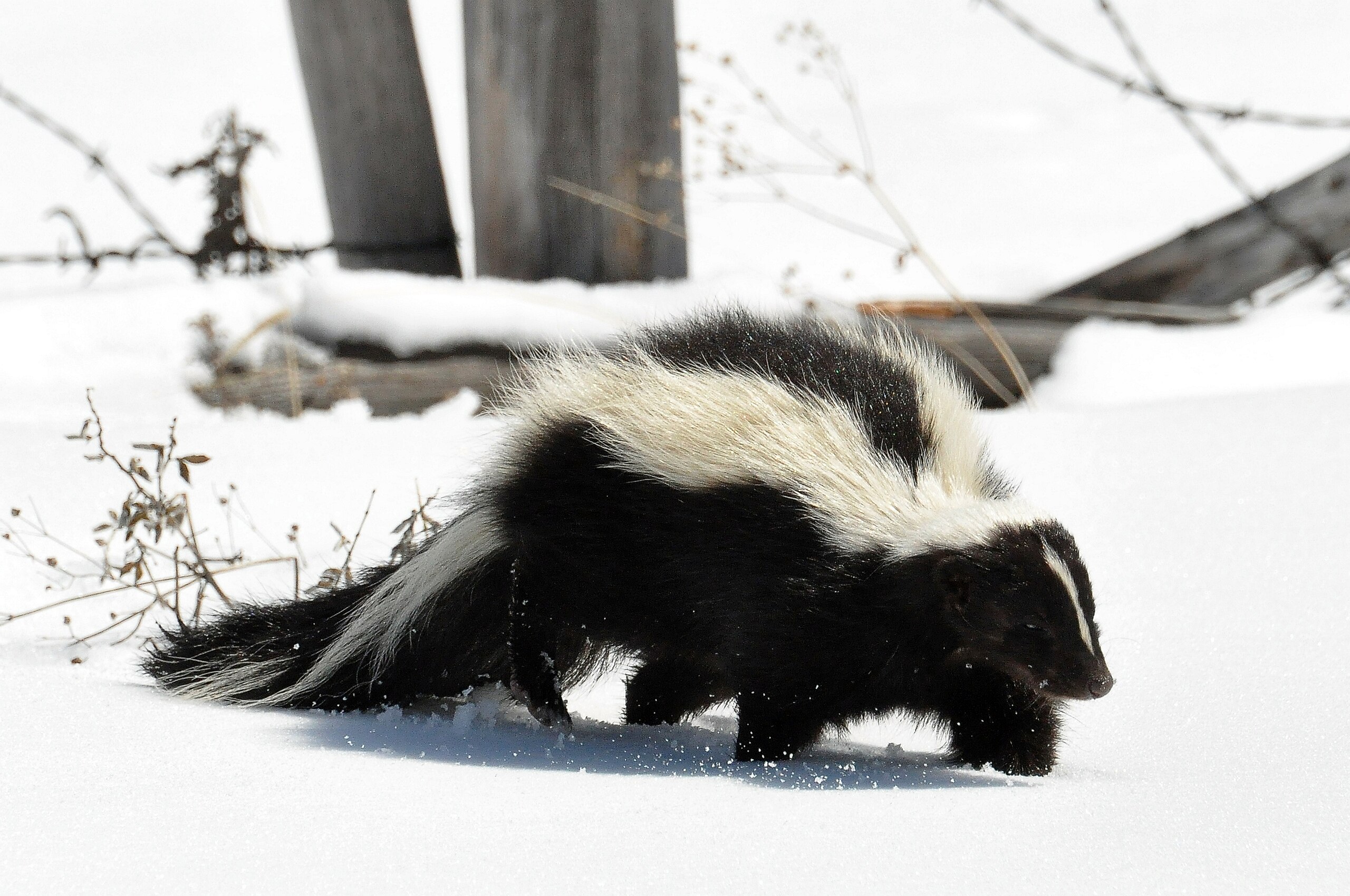Blog

#bioPGH Blog: Busy Fall Nights for a Skunk!
 A resource of Biophilia: Pittsburgh, #bioPGH is a weekly blog and social media series that aims to encourage both children and adults to reconnect with nature and enjoy what each of our distinctive seasons has to offer.
A resource of Biophilia: Pittsburgh, #bioPGH is a weekly blog and social media series that aims to encourage both children and adults to reconnect with nature and enjoy what each of our distinctive seasons has to offer.
Earlier this week, my husband and I were walking our puppers in our neighborhood when we both caught a whiff of the tell-tale stink of skunk. Just after acknowledging it out loud, though, the smell suddenly seemed to burst in the air! I gagged, our dogs sneezed, and we tried to walk roughly in the middle of the neighborhood street since couldn’t see any skunks with all of the hedges on either side of us. We hadn’t been directly sprayed, but we were close to whatever had been. About ten minutes later, at a different point in the neighborhood, we again smelled the unmistakable potent potion; and perhaps five minutes after that, we finally saw little striped friend diving into shrubs on the hillside across the street! So what was up with all of the with skunks that night? Why the stinky bustle?
That evening in particular was a bit more hopping than usual, but late fall is generally a very active time for skunks. It’s the last scramble to forage food for the low-resource time of year and extended cold winter “naps” (skunks are not true hibernators, but will enter torpor). For many young adult skunks, this is also the time when they may be on the prowl for their own first dens, though some females will stay with their mothers for their first winter. All in all, it shouldn’t have surpised us to see a high level of activity this time of year.
In spite of the mighty musk, we didn’t get a good enough look at the offending stinker to ID it, but here in Pennsylvania, we are most likely to encounter the striped skunk, Mephitis mephitis. Skunks can live in a variety of habitat types, from forests to rural pastures to city parks. And their omnivorous diet is equally varied, including insects, fruits, small rodents and even snakes! Though their homes and diets may vary, skunks are uniform in their solitary, nocturnal lifestyle. They prefer to stay out of sight, even with their defensive musk; but during February and March, they make an exception to the solo life for breeding season (meaning we will keep an eye, or nose, out again for skunks next season during their amorous activity phase.)

This little striped skunk has some very important things to do. Photo: Dan & Lin Dzurisin, CC-BY-2.0
And of course, skunks are most famous for that musk that we wanted to avoid earlier this week! Skunks produce their musk in small glands around their anus, and when they spray, little muscles around gland help eject the musk. Usually, skunks will try to intimidate before they resort to spraying. When threatened, skunks typically first perform a warning dance, which can include foot-stamping, turning circles, or even performing handstands (a spotted skunk behavior)! If you aren’t running by then, though, it’s probably too late. Skunks can directly spray their musk up to fifteen feet, and the smell can waft much further. Depending on weather conditions, humans can detect the scent over a mile away.
And of course, skunks are most famous for that musk that we wanted to avoid earlier this week! Skunks produce their musk in small glands around their anus, and when they spray, little muscles around gland help eject the musk. Usually, skunks will try to intimidate before they resort to spraying. When threatened, skunks typically first perform a warning dance, which can include foot-stamping, turning circles, or even performing handstands (a spotted skunk behavior)! If you aren’t running by then, though, it’s probably too late. Skunks can directly spray their musk up to fifteen feet, and the smell can waft much further. Depending on weather conditions, humans can detect the scent over a mile away.
In what seems to be a rude practical joke of nature, though, skunk musk actually packs a stinky double-punch. The primary scent that we notice comes from a group of chemicals called thiols, and we smell them immediately. However, if you’ve ever bathed a skunk-sprayed dog and noticed that he seemed to smell worse after the bath, that’s because some of the chemical compounds in musk (thiolacetates) are activated by water. If you or a four-legged friend do get sprayed by a skunk, the fabled tomato juice bath won’t help. The most effective options seem to include a detergent meant to clean grease, like dish soap, and a mix of diluted hydrogen peroxide and baking soda. The detergent will break down the oils present in the musk, and the peroxide and baking soda will break up the thiol molecules. (Do be aware, though, that the peroxide can bleach hair, fur, and clothes!)
What is important to remember, though, is that skunks don’t want to spray you; they generally just want to be left alone. They carry 5-6 “sprays” by default, but if they deplete their supply, it can take them up to ten days to generate enough to spray again, during which time they are defenseless. As with most wildlife, if you don’t bother them, they won’t bother you. Something was clearly bothering our stinky neighbors this week, but we still came out unscathed – or unskunked?
Now I will admit, we will keep a wide radius around the next skunk we see, but here’s to a wild neighbor who is still important and honestly pretty adorable (see below for evidence) — from a distance!
Photos: Cover, Tom Friedel, CC-BY-3.0; Header, Pexels C0

